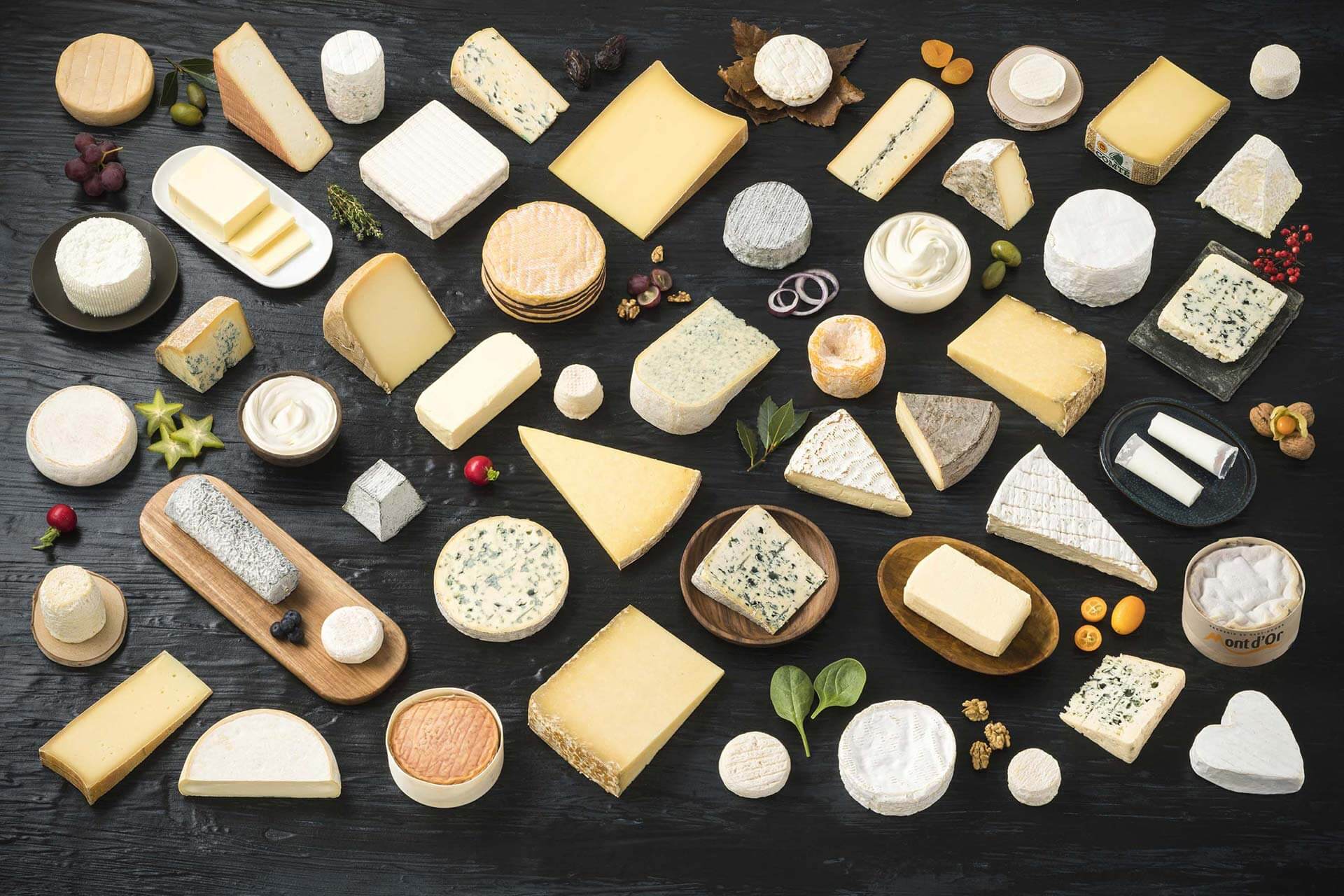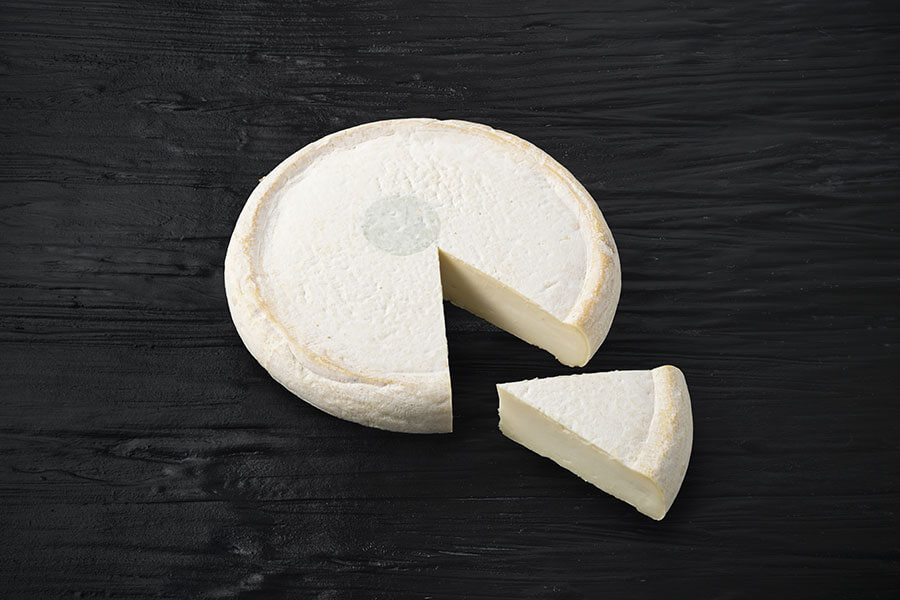Reblochon
We love Reblochon in every season!
Green or red Reblochon? No, it is not about the colour of the rind, which we know is always saffron yellow with a thin white layer. We are talking about the colour of the casein pellet put on this staple of the cheeseboard, which comes from farms in the Savoie mountains and is made exclusively with milk from mountain breed cows (Abondance, Montbéliarde and Tarine) fed primarily on grass in the summer and hay in the winter. The green colour means it is “farmhouse Reblochon”, therefore handmade by “farmhouse producers” after each milking of a single herd. Red denotes “dairy Reblochon”, meaning it has been made in a dairy or fruit production plant with milk from several farms. After at least 15 days in a cellar, Reblochon is wrapped and then continues maturing until it is ready to eat, sitting on a thin beechwood ring. For gourmet purposes, Reblochon is still the essential cheese used in tartiflette. It can also be eaten plain just with a slice of bread! Reblochon has a creamy texture and a soft and scented taste that can readily be served as a starter or as part of a dish with fruit, vegetables and summer spices. Reblochon is a whole raw milk pressed and uncooked cheese. It has a diameter of 13 to 14cm and weighs around 500g. It is also available in a smaller size, with a diameter of 9cm and weight of about 250g. Reblochon is relatively low in calories because its fat content is just 27%! Reblochon can be eaten in all seasons … and on all occasions!
-
Cheeser
Cow’s milk -
YEAR OF LABELLING
1958 -
Raw milk
-
Pressed uncooked cheese
Key figures
-
487 Milk producers
-
120 Farmhouse producers
-
18 Production plants
-
11 Maturing plants
-
16 934 Tons marketed in 2020
READ MORE
www.reblochon.fr

